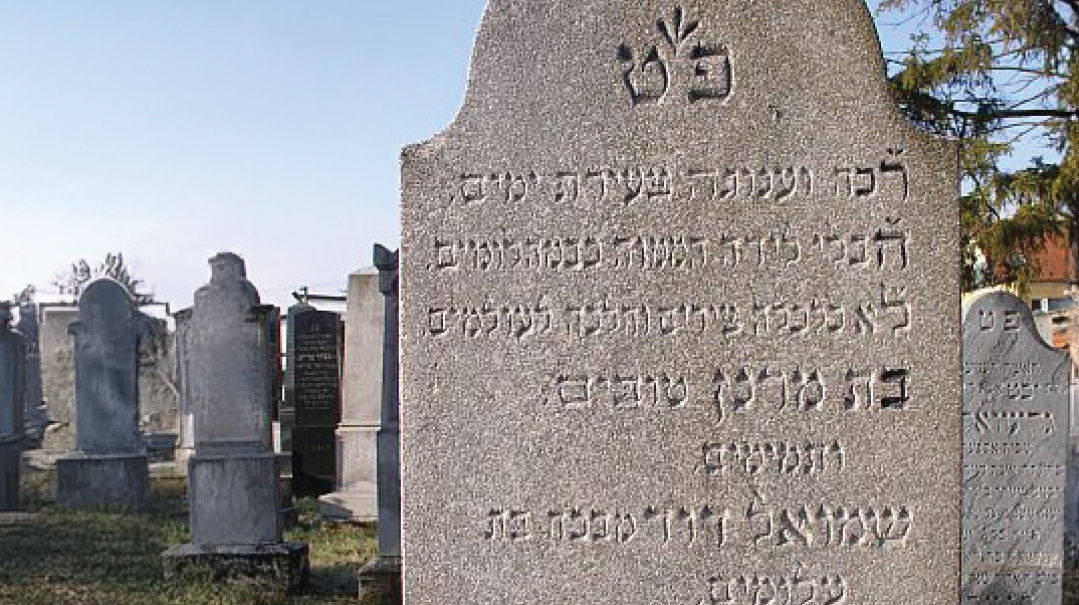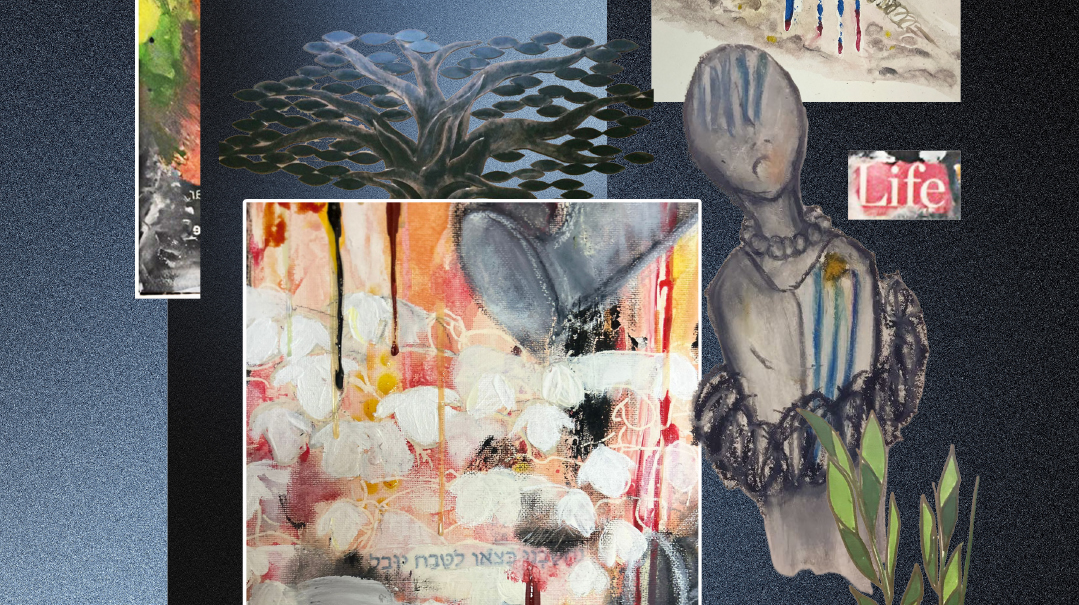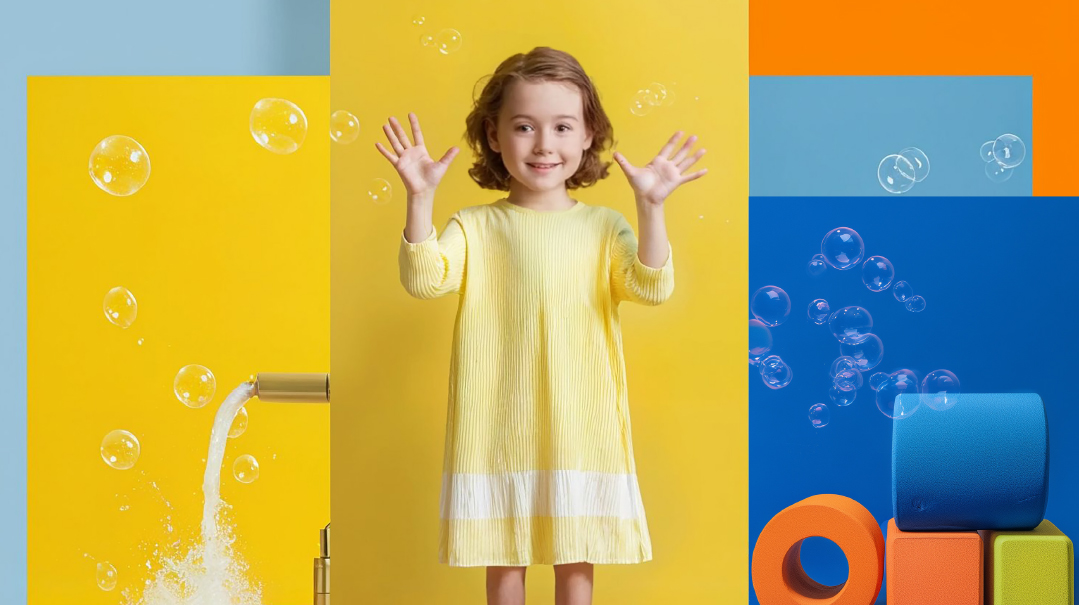Meet… Madeleine Isenberg
| October 29, 2024Madeleine Isenberg deciphers old matzeivos and connects people with their ancestors and family history

Touching the Past
“Miri, come here!” I cried. “Look what I’ve found!”
Standing in the old, windswept cemetery, a gray mist of rain obscuring the sky and overgrown weeds brushing my knees, I had stumbled upon my past.
The year was 1996. The place was Kezmarok, Slovakia, the hometown of my father’s family in prewar Europe. Most of the Goldsteins left this world through the chimneys of Auschwitz, but my father and his brother, Miri’s father, were stranded in England when the war broke out. The brothers never went back to Kezmarok, marrying and building new lives in England, but I grew up hearing stories about the family I never knew. I dreamed of seeing their old town.
My dream felt like an impossibility after I immigrated to America and became a computer programmer for Northrop Grumman Corporation, a manufacturer of aircraft for the US military and commercial airlines. Some of my work was classified, and with the Iron Curtain firmly in place over Slovakia, there was little chance for employees in my business to visit a Communist country.
By 1996, that had finally changed, and it was time to see Kezmarok for myself. After an arduous journey, Miri and I contacted the “caretaker” of the cemetery. When he unlocked the gates, we discovered a place that looked like it had been neglected for decades. How was I going to find my family? Wandering through the overgrowth, touching worn inscriptions, I suddenly found a familiar name: Rachel, our great-grandmother. She had died more than 100 years earlier at 26, after giving birth to her third child.
I knew the story, but touching the history with my own hands gave me a deep sense of connection. In that cemetery, so often a place of sadness, I cried tears of joy.
Deciphering the Puzzle
In 1999, my Israeli cousins, Renée and Shaul Gassner, visited Kezmarok. Shaul drew a rough map of the cemetery that he shared with the family. As he listened to a devout Christian tour guide relate the town’s history to a group of tourists, Shaul challenged him.
“That’s interesting, but what about the Jews who lived here?”
The tour guide, a decent man named Mikulas “Miki” Liptak, was both startled and disturbed by the question. Born after World War II, he didn’t know much about the Jews of Kezmarok, so he began to dig deeper into the Jewish history of the town.
When Kezmarok received funding to preserve the Jewish cemetery in 2004, Miki, an expert photographer, began to take pictures of the newly cleared and visible tombstones. Since he couldn’t read Hebrew inscriptions, Miki sent the photos to Shaul; Shaul redirected Miki to me. Since my visit in 1996, I’d been researching our family’s past, becoming the family historian. Why not help Miki decipher the matzeivos of Kezmarok? Over the next few years, Miki sent batches of 5 to15 photos of tombstones daily, and I labored to decode them.
As I collected given and family names and dates, documenting everything in spreadsheets, I discovered that knowing how to read Hebrew was only the beginning. The widths of matzeivos constrained information into a small space, requiring the use of many roshei teivos (abbreviations). Roshei teivos on matzeivos didn’t always have a recognizable indicator, like stricklach (two lines above the word). Sometimes, there’s a segol or zarkah (trop marks) on top of a group of letters indicating they’re roshei teivos.
Not recognizing roshei teivos can lead to amusing errors. One tombstone had an explanation that chaf-hei-reish meant the word kahar — like a mountain. A closer look showed that these letters were roshei teivos, really meaning kevod harav. Vastly different!
I also discovered that in older cemeteries, men and women were buried in different sections. People were also buried on a first come, first served basis, so all the men or women who passed away in a specific year were buried one after the other. If a date on a matzeivah is impossible to read, nearby stones might offer clues.
Further Afield
After taking photos of the 550 matzeivos in Kezmarok, Miki traveled farther afield to the cemeteries of surrounding towns, sending new photos to interpret. Plunging deeper into this new field, I also studied pictures of tombstones from other countries and found languages besides Hebrew and Aramaic. In Rhodes, some inscriptions were in Ladino or Greek, and as the Jews in Europe modernized, Spanish, French, and German entered the picture. My high school and college language studies were suddenly useful!
I posted my genealogical research on Jewish genealogy sites, such as JewishGen.org, and began receiving requests for help. People who couldn’t read Hebrew, people searching for their ancestors, people who knew their forebears were buried in a specific cemetery but weren’t sure where — all reached out to me.
Some of the interesting connections I’ve made involve chassidic dynasties, with names such as Halberstam and Jungreis. Recently, a contact in Kiryas Yoel was searching for a well-known chassidic family, and he was very grateful for my help.
No Coincidences
My cousin on my maternal side, Lord Rabbi Jonathan Sacks z”l, once said to me, “There’s no such thing as coincidence. Everything’s bashert.”
I experience that all the time.
In August 2018, I presented my findings at an International Association of Jewish Genealogical Societies (IAJGS) conference in Warsaw, Poland, and then traveled to Krakow for Shabbos. On Friday morning, Miki met my husband and me and drove us to tour Oskar Schindler’s factory, where we saw windows of photos of everyone Schindler saved. A friend in Los Angeles had asked me to find her parents among the photos, so after locating them, Miki took a photo of us with one whole window full of pictures. Then Miki drove us to the Nowy Targ cemetery. The stones were mostly destroyed by the Nazis, but I found my paternal great-great-grandmother’s matzeivah. Two stones away, I noticed the name Silberring.
On Sunday, I visited the new cemetery in Krakow alone (my husband is a Kohein). Leaning over to take a photo, I tripped and cut myself. A local cemetery visitor who’d been davening at his grandfather’s kever patched me up. I glanced at the family name on his grandfather’s kever: Silberring.
“I think you have relatives buried in Nowy Targ,” I told him.
He was stunned, and we began to discuss his family history. His mother had been rescued by Oskar Schindler, and Silberring was her maiden name. We exchanged contact info, and three stones away, I found my relative’s matzeivah. Later, looking at that Schindler photo, I noticed the name Silberring near one of the women — we’d captured the man’s mother in our picture!
Connections
Growing up as the child of a Holocaust survivor, I always felt a gaping hole in my family history. Searching for the matzeivos and information about my family filled that space with the reality of a personal connection.
Putting the pieces together, bringing the past into our present, I make a different kind of shidduch. And when all the information falls into place, and someone has the privilege of connecting to their history, I know I’ve found my purpose.
A book on my nightstand…
any puzzling mystery with a complex plot!
I can never…
part with sentimental paraphernalia from the past.
Peek into my closet…
and you’ll find all things purple!
(Originally featured in Family First, Issue 916)
Oops! We could not locate your form.







